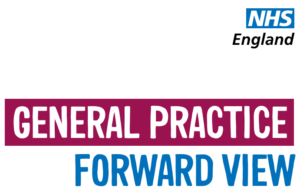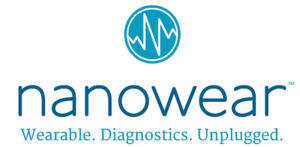- NHS England announces extra £112m for expansion of GP-based pharmacist scheme (pharmaceutical-journal.com)
The roll out of the pilot will see a further 1,500 pharmacists working in general practice by 2020-2021...NHS (National Health Service) England has announced an additional £112m ($137m) investment to roll out a pilot scheme embedding clinical pharmacists in GP surgeries...a commitment set out in the ‘General practice forward view’...The expansion...follows a “successful” pilot that involved 490 clinical pharmacists working in approximately 650 general practices across 90 sites...The goal of the scheme is to ease pressure on the NHS by increasing capacity in general practice, which will free up GP time as well as ensure safer prescribing by offering specialist advice and support for patients with chronic diseases…The success of the initial pilots has shown the benefits of having more clinical pharmacists in general practice, reducing GP workload and helping ensure patients are seen by the right professional in a more convenient and timely way...the scheme was welcomed by the Royal Pharmaceutical Society, which says it is a “significant step” towards its shared vision with the RCGP ( Royal College of General Practitioners) that every GP practice should have access to the expertise of a pharmacist...
- Editor’s Corner: Signs point to a surprising pharma new year (fiercepharma.com)
...trends and issues we expect to drive the industry—and related debate—in the coming year. The broad themes aren’t tough to identify. But predicting the specifics, some of them quite important, is, this year, less like reading a crystal ball and more like picking up a Magic 8 Ball...drugmakers will rely on M&A of one sort or another to fuel growth and augment pipelines. As has been pharma’s practice recently, sales and spinoffs will also play a role….just how much cash buyers have to play with depends on an as-yet-unmade decision: Whether U.S. companies can bring home their offshore cash tax-free. Outlook good, which means billions more dollars for U.S. deals and, probably, higher prices as that cash chases a limited number of solid acquisition targets.
- biosimilars, the threat to biologic drug prices and monopolies that’s been on its way for years.
- Manufacturing brought a round of surprises in 2016 as the FDA rejected a series of new drugs because of questions about—or criticisms of—the plants where they’d be produced.
- pharma’s shift to specialty drugs from mass-market blockbusters hasn’t put a dent in DTC budgets, despite the fact that their target populations are far smaller.
- Signs point to definitely when it comes to the drug pricing debate continuing into 2017, but it’s far from definite where that debate will go next.
- Nanowear gains FDA approval for first-of-its-kind wearable: undergarment that tracks cardiac health (drugstorenews.com)
Nanowear, an early stage developer of cloth-based diagnostic monitoring nanosensor technology...announced that it has received FDA Class II 510(k) clearance for its first product, SimplECG, a remote cardiac monitoring undergarment...(it) collects continuous multi-channel ECG, heart rate and respiratory rate data from the garment and transfers it to a web-based portal for review by a physician, by way of a mobile application…it provides accreditation of the company's one-of-a-kind, cloth-based sensor technology as medical-grade...This is the first step and foundation of what we believe to be an extensive array of applications for our nanosensor technology – including numerous other electrical, biometric and biochemical signals that can be measured directly from the skin without conductive gels, adhesives or skin preparation. The market of applications for healthcare alone is a multi-billion-dollar opportunity, but as we look beyond to consumer, industrial, clinical research, military and public sector applications, the addressable market expands exponentially...
- Software as a Drug (thehealthcareblog.com)
What if your spouse were a borderline Type 2 diabetic? If you had the money, you could hire someone to follow her or him around the clock, sort of like a glorified personal trainer. Your spouse would make sure he or she took a daily mile-long walk, did some weight training to build muscle mass and would stop you from eating ice cream or cake or drinking a glass of wine...A good idea – but too expensive, right?...It doesn’t have to be, because a new and highly efficient modality – digital therapeutics – has entered the picture. Commonly referred to as “software as a drug,” digital therapeutics relies on software to similarly deter your spouse from becoming diabetic – in tandem with online coaches, electronic messages and the use of social networks...Most digital health companies deploy software modules as an enhancement, or even a substitute, to a prescription drug. They are affordable and effective and poised to become a critical component of digital health, thereby substantially improving the efficiency of American healthcare. Digital therapeutics is already roughly a $500 million market and positioned to balloon into a $6 billion market…
- New precision medicine tool helps optimize cancer treatment (worldpharmanews.com)
Columbia University Medical Center researchers have created a computational tool that can rapidly predict which genes are implicated in an individual's cancer and recommend treatments. It is among the most comprehensive tools of its kind, and the first that incorporates a user-friendly web interface that requires little knowledge of bioinformatics...The researchers found that iCAGES identified personal cancer "drivers" 77 percent of the time when presented with a pair of randomly chosen driver genes and non-driver genes, compared with about 51 percent for other computational tools... Cancer "drivers" can vary from patient to patient, and there are no practical clinical tools for predicting which variants in an individual's genome are driving his or her disease and which are present but not causing disease...Dr. Wang...developed a computational tool called integrated CAncer GEnome Score…(it) analyzes the patient's entire genome, comparing it to the genomic sequence of the patient's tumor to identify possible cancer-causing variants. Next...cross-references these variants to databases of known cancer-causing genes, using statistical analyses and machine learning techniques to prioritize the most likely driver genes. Finally...matches the variants to FDA-approved and experimental drug therapies that specifically address those variants or genes. The entire process takes about 30 minutes...
- CME providers use Facebook Live to educate doctors (mmm-online.com)
Physician's Weekly, a point-of-care company that provides continuing medical education services to physicians, launched its first CME course using Facebook Live...the publishing company worked with continuing education provider Advancing Knowledge in Healthcare and Dr. Zubin Damania, also known as ZDoggMD, a physician personality who is known for transforming popular songs with his own music video and lyrics that focus on health, to launch its first accredited CME and continuing education Facebook livecast for physicians and nurses…Damania presented a 39-minute interactive CME course...on how to better understand patients' decisions that include moral choices such as end-of-life care and vaccinations...viewers were able to post comments and receive replies in real time from the physician...Damania's Facebook Live course garnered more than 34,000 views and 600 comments during his live session. Those numbers are expected to grow...The Facebook Live course is the first in a series of CME initiatives Physician's Weekly has planned for social-media platforms. The company will continue working with AKH and ZDoggMD to develop more CME livecasts, including the launch of live tweet chats in the coming months, and is considering using Snapchat in the future...
- Implementing cloud marketing technology (pharmaphorum.com)
Sanofi Pasteur MSD’s journey to digital has helped sales rep engagement, as well as compliant content creation and distribution...Nearly three years ago, Sanofi Pasteur MSD1 was preparing to launch three new products and decided to take the opportunity to incorporate new, digital channels for better customer engagement… we proposed to reframe our commercial strategy with new technology…The company chose to standardise globally on a cloud-based multichannel CRM solution. Armed with new digital capabilities fully integrated across email, face-to-face, and web, the company’s sales representatives immediately began sending compliant emails directly from the system to customers and personally engaging with healthcare professionals via self-directed, interactive web presentations...The company tripled the expected adoption rates six months ahead of forecasts...To improve the speed of content development and distribution, Sanofi Pasteur MSD took a two-pronged approach...First, it sought to consolidate its agency partners globally, to harmonise content development and increase content reuse across the company...Second, the company looked to streamline content production by adopting a cloud-based commercial content management solution with a critical digital asset management component...The results were transformational, with content production centralised, but with local regions still able to adapt content to meet specific regulatory or cultural needs. And, as it was a cloud-based solution, global agencies now had easy access to promotional assets.
- Inside the DEA: A chemist’s quest to identify mystery drugs (hosted.ap.org)
New drugs were appearing in the lab every other week, things never before seen in this unmarked gray building in Sterling, Virginia. Increasingly, these new compounds were synthetic opioids designed to mimic fentanyl...The fentanyl-like drugs are pouring in primarily from China...an assertion Beijing maintains has not been substantiated. Laws cannot keep pace with the speed of scientific innovation. As soon as one substance is banned, chemists synthesize slightly different, and technically legal, molecules and sell that substance online…Right now we're seeing the emergence of a new class - that's fentanyl-type opioids...Based on the structure, there can be many, many more substitutions on that molecule that we have not yet seen...Entrepreneurial chemists have been creating designer alternatives to cannabis, amphetamine, cocaine and Ecstasy for years. But this new class of synthetics is far more lethal...Today, it is almost as easy to order synthetic opioids on the open internet as it is to buy a pair of shoes...Payments can be made by Western Union, MoneyGram or Bitcoin, and products are shipped by DHL, UPS or EMS - the express mail service of China's state-run postal service. As the lines between licit and illicit commerce blurred, it became possible for just about anyone with internet access to score an ever-changing array of lethal chemicals...
Merck KGaA has taken a page from consumer packaged goods’ playbook for its consumer OTC marketing strategy—and it's working...The German-based maker of a $1 billion portfolio of healthcare brands refers to the strategy as creating “lovebrands,” in a recent report on the companywide success of its new approach. The familiar consumer-goods strategy builds brand identities that not only depend on the technical or functional assets of the product, but also create an emotional benefit or connection with consumers...The word Merck uses—“lovebrand”—is associated with...Kevin Roberts, who wrote the book Lovemarks about the ways brands can transcend even loyal consumer status to become loved by people...Merck uses the strategy across all six global consumer brands and also its five or six regional brands...and is looking at how to use it with its local brands. The consumer-driven strategy hasn't been picked up by Merck’s pharma prescription drugs as of yet...The Merck consumer brands under the long-term strategy have “grown significantly in the past two to three years," and consumer perception, attitudes and awareness of the brands have also been increasing…The consumer-style brand strategy isn't meant to take away from the products' technical or scientific strength...We take our strong scientific and medical expertise and add that (lovebrand) component on top and that makes us stronger...
- Renown Expands Telehealth To Four Rural Nevada Communities (thisisreno.com)
Renown Health is expanding its video health consultation network to four rural hospitals in Nevada...The videoconferencing service, known as telehealth, allows doctors in Reno to connect with patients in rural areas who may not have access to specialty services, like neurology or pediatrics...Kirk Gillis is the vice president for accountable care with Renown, and he says the need for specialty care in rural areas is critical...“A patient in a rural community, and their primary care provider in that community said, ‘You need to see a specialist.’ The nearest specialist is 200 miles away in Reno, Nevada. They may or may not forego that care, because they may or may not be able to make that trip,” he says...Four hospitals in Nevada have joined the network, including those in Lovelock, Hawthorne, Battle Mountain and Caliente.









